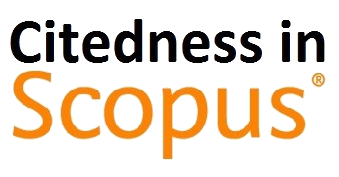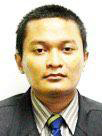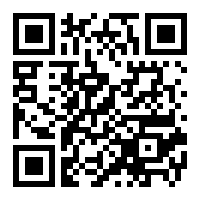Developing The Concepts & Strategy of Smart Regional: How to Increase Tourism & Investors (Smart city 4.0)
(1) Faculty of Computer Science, Dian Nuswantoro University
(2) Faculty of Computer Science, Dian Nuswantoro University
(3) Faculty of Computer Science, Dian Nuswantoro University
(*) Corresponding Author
Abstract
Full Text:
PDFReferences
I. Gamayanto, “Analysis of Wollongong City Council Using 7S ’ S of Galliers and Sutherland Methods,” comptech J., no. 205, pp. 205–213, 2017.
S. HAJDUK, “The Concept of a Smart City in Urban Management,” Business, Manag. Educ., vol. 14, no. 1, pp. 34–49, 2016, doi: 10.3846/bme.2016.319.
V. Albino, U. Berardi, and R. M. Dangelico, “Smart cities: Definitions, dimensions, performance, and initiatives,” J. Urban Technol., vol. 22, no. 1, pp. 3–21, 2015, doi: 10.1080/10630732.2014.942092.
S. P. Mohanty, U. Choppali, and E. Kougianos, “Everything you wanted to know about smart cities,” IEEE Consum. Electron. Mag., vol. 5, no. 3, pp. 60–70, 2016, doi: 10.1109/MCE.2016.2556879.
P. M. Patel and V. A. Deshpande, “Application Of Plan-Do-Check-Act Cycle For Quality And Productivity Improvement - A Review,” Int. J. Res. Appl. Sci. Eng. Technol., vol. 5, no. I, pp. 197–201, 2017.
V. Gaspersz, “Strategic Management & Lean (Six Sigma),” in Strategic Management & Lean (Six Sigma), 2016.
N. Noori, T. Hoppe, and M. de Jong, “Classifying pathways for smart city development: Comparing design, governance and implementation in Amsterdam, Barcelona, Dubai, and Abu Dhabi,” Sustain., vol. 12, no. 10, 2020, doi: 10.3390/SU12104030.
M. Peris-Ortiz, D. Bennett, and D. Yabar, Sustainable Smart Cities: Creating Spaces for Technological, Social and Business Development. 2017.
S. Joss et al., “The Smart City as Global Discourse : Storylines and Critical Junctures across 27 cities,” J. Urban Technol., vol. 26, no. 1, pp. 3–34, 2018, doi: 10.1080/10630732.2018.1558387.
C. Lim, N. Mostafa, and J. Park, “Digital omotenashi: Toward a smart tourism design systems,” Sustain., vol. 9, no. 12, 2017, doi: 10.3390/su9122175.
K. Kashima and Y. Morita, “Conceptualizing Smart Tourism of Japan: A Case Study Of Smart Tourism Design on China And Thailand,” Int. J. Manag. Appl. Sci., vol. 3, no. 3, pp. 76–78, 2017.
C. tan Andries van Dijk, Hans teuben, Barend duits, Sam hartveld, Alberto ogura, Annamarie Scharrenberg, “Smart Cities: How rapid advances in technology are reshaping our economy and society,” 2015. doi: 10.1016/B978-0-08-097086-8.74017-7.
D. Buhalis, “Technology in tourism-from information communication technologies to eTourism and smart tourism towards ambient intelligence tourism: a perspective article,” Tour. Rev., vol. 75, no. 1, 2019.
H. F. B. Tadeu, P. R. de Souza, and J. T. M. Silva, “Economic Development Analysis for Smart Cities: A New Approach for Management and Innovation Practices,” Aust. J. Basic Appl. Sci., pp. 863–872, 2015, doi: 10.22161/ijaers.6.3.10.
M. Angelidou, “The Role of Smart City Characteristics in the Plans of Fifteen Cities,” J. Urban Technol., vol. 24, no. 4, pp. 3–28, 2017, doi: 10.1080/10630732.2017.1348880.
J. Winkowska, D. Szpilko, and S. Pejić, “Smart city concept in the light of the literature review,” Eng. Manag. Prod. Serv., vol. 11, no. 2, pp. 70–86, 2019, doi: 10.2478/emj-2019-0012.
P. Lee, W. C. Hunter, and N. Chung, “Smart tourism city: Developments and transformations,” Sustain., vol. 12, no. 10, pp. 1–15, 2020, doi: 10.3390/SU12103958.
M. Thite, “Smart cities : Implications of urban planning for human resource development Human Resource Development International Smart cities : implications of urban planning for human resource development,” Hum. Resour. Dev. Int., vol. 14, no. November 2011, pp. 623–631, 2011, doi: 10.1080/13678868.2011.618349.
T. Nam and T. A. Pardo, “Smart city as urban innovation: Focusing on management, policy, and context,” in ACM International Conference Proceeding Series, 2011, no. September, pp. 185–194, doi: 10.1145/2072069.2072100.
A. JASROTIA and A. GANGOTIA, “Smart Cities To Smart Tourism Destinations: a Review Paper,” J. Tour. Intell. Smartness, vol. 1, no. 1, pp. 47–56, 2018.
DOI: https://doi.org/10.30645/ijistech.v5i3.140
Refbacks
- There are currently no refbacks.
Jumlah Kunjungan:
Published Papers Indexed/Abstracted By:












